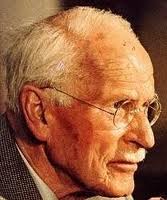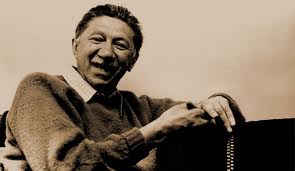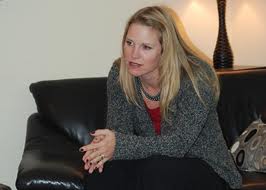Thought for my first blog post I’d keep it simple, and go over the history of western psychotherapy. Thought that people interested in healing might get something out of a short synopsis of psychotherapy. To illustrate the soup psychotherapy is currently swimming in. The therapeutic model I use, holistic integrated psychotherapy, integrates all of these different traditions, and is applied appropriately for each individual person. Hope I write this in an engaging way, and that people will be able to draw relations to their own personal experiences.
1st Wave – Psychodynamic Psychotherapy
Famously founded by Sigmund Freud in the early 20th century, Psychodynamic Psychology formulated a very comprehensive theory of the psyche. Its ‘topographical model’ postulates for the first time in the modern world the idea that our conscious intentions are determined by unconscious ‘drives’. In drastic confrontation with the highly rational Victorian mindset, psychodynamic theory states that our personal historical experiences, including traumas and learned behaviours, determine our present day activities.
Freud’s classic ‘psychoanalytic’ theory has gone through many change s throughout the 20th century. The most important addition for holistic integrated psychotherapy is Carl Jung, who broadened the idea of the unconscious to include a connection to the ‘collective unconscious’. The collective unconscious embodies our culture’s collective psyche, including the present day encoding of historical collective traumas and evolutions. ‘Archetypes’, which are fundamental cosmic themes which manifest within human lives, form the bases of the collective unconscious. Examples of archetypes include, the Masculine and Feminine, the Mother and Father, the modern Hero, Animal Spirits, to name a few. Jung showed that each archetype has polarized sides, one being ego syntonic and pleasurable, and the other being an ego dystonic ‘shadow
s throughout the 20th century. The most important addition for holistic integrated psychotherapy is Carl Jung, who broadened the idea of the unconscious to include a connection to the ‘collective unconscious’. The collective unconscious embodies our culture’s collective psyche, including the present day encoding of historical collective traumas and evolutions. ‘Archetypes’, which are fundamental cosmic themes which manifest within human lives, form the bases of the collective unconscious. Examples of archetypes include, the Masculine and Feminine, the Mother and Father, the modern Hero, Animal Spirits, to name a few. Jung showed that each archetype has polarized sides, one being ego syntonic and pleasurable, and the other being an ego dystonic ‘shadow ’ side. For example, the Mother archetype on the positive side is an all giving, nurturing, and safe loving homestead. While the dark side is a suffocating, all consuming, annihilating entity. Psychic healing for humans comes from being able to honestly embody the complexities of these archetypes into the drama of one’s life on earth.
’ side. For example, the Mother archetype on the positive side is an all giving, nurturing, and safe loving homestead. While the dark side is a suffocating, all consuming, annihilating entity. Psychic healing for humans comes from being able to honestly embody the complexities of these archetypes into the drama of one’s life on earth.
2nd Wave – Behavioural and Cognitive Psychotherapy
Come the early-mid 20th century Behavioural Psychology came on the seen. In reaction to psychodynamic theory, which postulates the human psyche as being complex and determined by multiple forces, behavioural psychology focused on the simplified cause and effect actions which determine human behaviour. Two types of behavioural conditioning are best known 1. Operant conditionin g (B.F. Skinner) – focusing on changing behaviour through either reward or punishment 2. Classical conditioning (Ivan Pavlov) – altering behaviour through integrating a neutral stimulus with a desired stimulus. Pavlov’s dog who salivates from a bell even though the food is no longer present. Because of the success of this cause and effect analysis, and its efficacy of being able to change human behaviour, this model go transferred to human cognition. Changing a thought will have specific changes on one’s mood, and behaviour. Cognitive Behavioural Therapy is often used with depressed and anxious people, as their depressive or anxious thought patterns often have a drastic effect on the rest of one’s health. Therefore, correcting unrealistic thoughts, and engaging in healthy behaviours, will have the result of lifting the generalized states of depression and anxiety.
g (B.F. Skinner) – focusing on changing behaviour through either reward or punishment 2. Classical conditioning (Ivan Pavlov) – altering behaviour through integrating a neutral stimulus with a desired stimulus. Pavlov’s dog who salivates from a bell even though the food is no longer present. Because of the success of this cause and effect analysis, and its efficacy of being able to change human behaviour, this model go transferred to human cognition. Changing a thought will have specific changes on one’s mood, and behaviour. Cognitive Behavioural Therapy is often used with depressed and anxious people, as their depressive or anxious thought patterns often have a drastic effect on the rest of one’s health. Therefore, correcting unrealistic thoughts, and engaging in healthy behaviours, will have the result of lifting the generalized states of depression and anxiety.
3rd Wave – Humanistic Psychotherapy
Humanistic Psychotherapy came on the seen in the revolutionary explorative time within the 60’s counter culture. Humanistic psychology was critical of the psychodynamic focus on the past, and the over emphasis on rationally understanding the psyche, without actually creating much transformational change. Instead of understanding the past, the focus became on experientially moving forward, and discovering all of one’s potential. Abraham Maslow talked about becoming ‘self-actualized’, including ‘peak experiences’, where one is in a state of creative flow both within oneself and one’s life. Humanistic psychotherapy focuses on the therapeutic relationship. The importance of
explorative time within the 60’s counter culture. Humanistic psychology was critical of the psychodynamic focus on the past, and the over emphasis on rationally understanding the psyche, without actually creating much transformational change. Instead of understanding the past, the focus became on experientially moving forward, and discovering all of one’s potential. Abraham Maslow talked about becoming ‘self-actualized’, including ‘peak experiences’, where one is in a state of creative flow both within oneself and one’s life. Humanistic psychotherapy focuses on the therapeutic relationship. The importance of intunement, empathy, and care, as being the most fundamental variable for people to heal and evolve.
intunement, empathy, and care, as being the most fundamental variable for people to heal and evolve.
4th Wave – Transpersonal Psychotherapy
Transpersonal Psychotherapy was born out of the humanistic movement, integrating not only personal actualization, but also the ‘transpersonal’, or spiritual dimensions within human experience. It integrates the knowledge gained in western psychotherapy with wisdom in eastern and western spiritual traditions. Theorists such as Ken Wilber have mapped out, and theoretically integrated all spiritual traditions together, cross referencing their commonalities and unique attributes. Transpersonal psychotherapy has also created modern techniques in which to enliven and experience the psychic experiences formally codified within ancient traditions. Stanslov and Christina Grof created Holotropic Breathwork as a means of re-experiencing and integrating pre and peri natal experiences, often talked about within
such as Ken Wilber have mapped out, and theoretically integrated all spiritual traditions together, cross referencing their commonalities and unique attributes. Transpersonal psychotherapy has also created modern techniques in which to enliven and experience the psychic experiences formally codified within ancient traditions. Stanslov and Christina Grof created Holotropic Breathwork as a means of re-experiencing and integrating pre and peri natal experiences, often talked about within  numerous ancient mythologies.
numerous ancient mythologies.
We now live in a ‘postmodern’ world, which highly relativizes the ‘truth’ within any therapeutic orientation. However, it is also a playground for previously diverse traditions to start kissing each other, and find how they truly mix. A time for people to discover the heart of their own mythology, and the creation of a complex, connected, and beautiful life.
